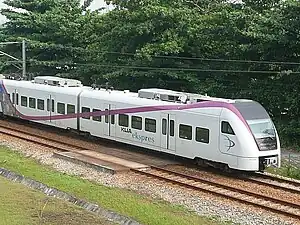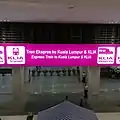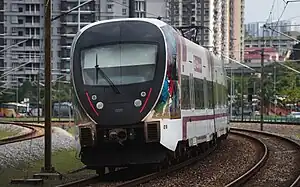| KLIA Ekspres | |||||||||||||||||||||||||||||||||||||||||||||||||||||||||||||||||||||||||||||||||||||||||||||||||||||||||||||||||||||||||||||||||||||||||
|---|---|---|---|---|---|---|---|---|---|---|---|---|---|---|---|---|---|---|---|---|---|---|---|---|---|---|---|---|---|---|---|---|---|---|---|---|---|---|---|---|---|---|---|---|---|---|---|---|---|---|---|---|---|---|---|---|---|---|---|---|---|---|---|---|---|---|---|---|---|---|---|---|---|---|---|---|---|---|---|---|---|---|---|---|---|---|---|---|---|---|---|---|---|---|---|---|---|---|---|---|---|---|---|---|---|---|---|---|---|---|---|---|---|---|---|---|---|---|---|---|---|---|---|---|---|---|---|---|---|---|---|---|---|---|---|---|---|
 | |||||||||||||||||||||||||||||||||||||||||||||||||||||||||||||||||||||||||||||||||||||||||||||||||||||||||||||||||||||||||||||||||||||||||
| Overview | |||||||||||||||||||||||||||||||||||||||||||||||||||||||||||||||||||||||||||||||||||||||||||||||||||||||||||||||||||||||||||||||||||||||||
| Native name | ERL Laluan KLIA Ekspres | ||||||||||||||||||||||||||||||||||||||||||||||||||||||||||||||||||||||||||||||||||||||||||||||||||||||||||||||||||||||||||||||||||||||||
| Owner | Express Rail Link | ||||||||||||||||||||||||||||||||||||||||||||||||||||||||||||||||||||||||||||||||||||||||||||||||||||||||||||||||||||||||||||||||||||||||
| Line number | 6 (purple) | ||||||||||||||||||||||||||||||||||||||||||||||||||||||||||||||||||||||||||||||||||||||||||||||||||||||||||||||||||||||||||||||||||||||||
| Locale | Kuala Lumpur - KLIA | ||||||||||||||||||||||||||||||||||||||||||||||||||||||||||||||||||||||||||||||||||||||||||||||||||||||||||||||||||||||||||||||||||||||||
| Termini |
| ||||||||||||||||||||||||||||||||||||||||||||||||||||||||||||||||||||||||||||||||||||||||||||||||||||||||||||||||||||||||||||||||||||||||
| Stations | 3 | ||||||||||||||||||||||||||||||||||||||||||||||||||||||||||||||||||||||||||||||||||||||||||||||||||||||||||||||||||||||||||||||||||||||||
| Service | |||||||||||||||||||||||||||||||||||||||||||||||||||||||||||||||||||||||||||||||||||||||||||||||||||||||||||||||||||||||||||||||||||||||||
| Type | Non-stop direct airport rail link | ||||||||||||||||||||||||||||||||||||||||||||||||||||||||||||||||||||||||||||||||||||||||||||||||||||||||||||||||||||||||||||||||||||||||
| System | |||||||||||||||||||||||||||||||||||||||||||||||||||||||||||||||||||||||||||||||||||||||||||||||||||||||||||||||||||||||||||||||||||||||||
| Operator(s) | Express Rail Link | ||||||||||||||||||||||||||||||||||||||||||||||||||||||||||||||||||||||||||||||||||||||||||||||||||||||||||||||||||||||||||||||||||||||||
| Rolling stock | 8 4-car Siemens Desiro ET 425 M Articulated EMU 2 4-car CRRC Changchun Equator Articulated EMU | ||||||||||||||||||||||||||||||||||||||||||||||||||||||||||||||||||||||||||||||||||||||||||||||||||||||||||||||||||||||||||||||||||||||||
| Daily ridership | 6,015 (2018)[1] | ||||||||||||||||||||||||||||||||||||||||||||||||||||||||||||||||||||||||||||||||||||||||||||||||||||||||||||||||||||||||||||||||||||||||
| Ridership | 2.2 million (2018)[1] | ||||||||||||||||||||||||||||||||||||||||||||||||||||||||||||||||||||||||||||||||||||||||||||||||||||||||||||||||||||||||||||||||||||||||
| History | |||||||||||||||||||||||||||||||||||||||||||||||||||||||||||||||||||||||||||||||||||||||||||||||||||||||||||||||||||||||||||||||||||||||||
| Opened | KL Sentral - KLIA 14 April 2002 | ||||||||||||||||||||||||||||||||||||||||||||||||||||||||||||||||||||||||||||||||||||||||||||||||||||||||||||||||||||||||||||||||||||||||
| Last extension | KLIA - klia2 1 May 2014 | ||||||||||||||||||||||||||||||||||||||||||||||||||||||||||||||||||||||||||||||||||||||||||||||||||||||||||||||||||||||||||||||||||||||||
| Technical | |||||||||||||||||||||||||||||||||||||||||||||||||||||||||||||||||||||||||||||||||||||||||||||||||||||||||||||||||||||||||||||||||||||||||
| Line length | 57 km (35.4 mi) | ||||||||||||||||||||||||||||||||||||||||||||||||||||||||||||||||||||||||||||||||||||||||||||||||||||||||||||||||||||||||||||||||||||||||
| Character | Mostly on surface | ||||||||||||||||||||||||||||||||||||||||||||||||||||||||||||||||||||||||||||||||||||||||||||||||||||||||||||||||||||||||||||||||||||||||
| Track gauge | 1,435 mm (4 ft 8+1⁄2 in) standard gauge | ||||||||||||||||||||||||||||||||||||||||||||||||||||||||||||||||||||||||||||||||||||||||||||||||||||||||||||||||||||||||||||||||||||||||
| Electrification | 25 kV 50 Hz AC catenary | ||||||||||||||||||||||||||||||||||||||||||||||||||||||||||||||||||||||||||||||||||||||||||||||||||||||||||||||||||||||||||||||||||||||||
| Conduction system | With driver | ||||||||||||||||||||||||||||||||||||||||||||||||||||||||||||||||||||||||||||||||||||||||||||||||||||||||||||||||||||||||||||||||||||||||
| |||||||||||||||||||||||||||||||||||||||||||||||||||||||||||||||||||||||||||||||||||||||||||||||||||||||||||||||||||||||||||||||||||||||||
The ERL KLIA Ekspres is an express airport rail link servicing the Kuala Lumpur International Airport (KLIA) in Malaysia. It runs from KL Sentral, the main railway station of Kuala Lumpur to KLIA as well as its low-cost terminal, klia2.[2] The line is one of the two services on the Express Rail Link (ERL) system, sharing the same tracks as the KLIA Transit. The KLIA Transit stops at all stations along the line, whereas the KLIA Ekspres runs as a direct non-stop express service between KL Sentral and KLIA/klia2. It is operated by Express Rail Link Sdn. Bhd. (ERL).
The line is one of the components of the Klang Valley Integrated Transit System. It is numbered 6 and coloured purple on official transit maps.
Line information
KLIA Ekspres serves three stations. The service runs non-stop from KL Sentral to KLIA and klia2, skipping the three KLIA Transit stops in between.
| Station Code | Name | Image | Platform Type | Notes |
| KE1 | KL Sentral |  |
Terminal (Side) | Northern terminus.
Common station with KT1 ERL KLIA Transit. Interchange station, without paid area integration, to:
|
| KE2 | KLIA Terminal 1 | _01.jpg.webp) |
Island | Common station with KT5 ERL KLIA Transit. |
| KE3 | KLIA Terminal 2 | _01.jpg.webp) |
Terminus (Island) | Southern terminus.
Common station with KT6 ERL KLIA Transit. |
At KL Sentral, the two platforms of the ERL are accessed from different parts of the station building. The KLIA Ekspres side platforms are accessed from the KL City Air Terminal (KL CAT) while the KLIA Transit island platform is accessed from the main Transit Concourse at Level 1. At KLIA T1 and T2, both KLIA Ekspres and KLIA Transit share the same island platform for both north-bound and south-bound trains.
At KLIA Terminal 1 station, KLIA Ekspres uses the same platform for Terminal 2- or city-bound trains. Displays are installed at the platform to indicate the travelling direction of the approaching train.
Extension

A 2.14 km (1.33 mi) extension to the new terminal was completed in 2013. Commercial service began on 1 May 2014, when klia2 opened. Inter-terminal travel time from KLIA Main Terminal to the new terminal is 3 minutes with a fare of RM2.[3]
Rolling stock
  | |
| Model |
|
|---|---|
| Manufacturer | |
| No. of trains |
|
| No. of cars |
|
| Dimensions |
|
| Weight | 120 Metric Tonnes |
| Electrical System Voltage | 25 kV 50 Hz AC |
| Acceleration | 1 m/s2 (3.3 ft/s2) |
| Top Speed | 200 km/h (124 mph) |
| Commercial Top Speed | 160 km/h (99 mph) |
| Axle arrangement | Bo′(Bo)′(2)′(Bo)′Bo′ |
| No. of passengers | 156 seated |
| Tracks |
|
History
Accidents
On 24 August 2010, Express Rail Link suffered their first reported accident, in which 3 passengers were injured. Two ERL trains collided at Kuala Lumpur Sentral, Of the trains involved one of them was about to depart at 9:45 pm for Kuala Lumpur International Airport while the other train, which was empty, rammed into its rear.[4][5]
Suspension in 2020 to 2022
On 4 April 2020, due to the Malaysian movement control order, which resulted in a significant reduction in ridership, all ERL rail services were temporarily suspended. Limited ERL services recommenced on 4 May 2020 with KLIA Transit service patterns.[6]
Again in Service
The (full) service was reopened on 3 January 2023.[7] For August of this year, a raise of the frequency on one train every 20 minutes, every day, was announced.[8]
Operations
Timetable
The KLIA Ekspres service officially began operations on 14 April 2002 connecting Kuala Lumpur with the Kuala Lumpur International Airport. The non-stop 57-kilometer journey takes around 28 minutes with trains departing at 15-minute intervals (until 2020) during peak hours and 20-minute intervals during off-peak hours.
- First train: 05:00
- Last train: 00:55
- Peak Hours: 05:00 - 09:00 and 16:00 - 22:00
- Off-Peak Hours: 09:00 - 16:00 and 22:00 - 00:55
Ticketing

Travellers from KL Sentral to KLIA and klia2 can purchase the tickets to board the KLIA Ekspres at the KL City Air Terminal (KL CAT) which is an integral part of the KL Sentral transport hub while travellers from KLIA and klia2 to KL Sentral must purchase their tickets before boarding in order to pass through the automated barriers at KL Sentral.
Ticketing is done either by automated ticketing machines or by ticketing staff at the stations. A one-way trip costs RM55 (increased from RM35 on 1 January 2016) from KL Sentral to KLIA/klia2 and vice versa.
The validity of purchased tickets is as follows:
- Standard One-Way Ticket: 3 months
- Standard Two-Way Ticket:
- First trip - 3 months
- Second trip - 3 months after the first trip
Electronic Payment
Passengers holding a Visa payWave credit card are able to use their cards at special fare gates when entering or leaving the pay area at all stations applicable to KLIA Ekspres and KLIA Transit.
All fare gates accept Touch 'n Go cards if the card contains sufficient funds. A minimum balance of RM20 is required. The automated fare collection (AFC) systems including high-speed fare gates (ACG), passenger service machine (PSM), MiFare smartcard tickets, Station Software and Central Management System (CMS) are provided by Longbow Technologies based in Malaysia.
Unfortunately, Touch 'n Go card users can no longer access the airline check-in counters at KL Sentral using their Touch 'n Go card, as of June 2015. While the Touch 'n Go card can still be used to board the KLIA Ekspres itself, passengers will need to check-in for their flights at KLIA instead.
Air travel facilities
On 13 July 2007, Express Rail Link Sdn Bhd, the operator of KLIA Ekspres, announced that from 23 July 2007 onwards, all 43 airlines serving KL International Airport may use the check-in facilities at KL CAT. However, As of 2016, only Emirates, Malaysia Airlines, Cathay Pacific, Etihad Airways and Royal Brunei Airlines flights may check-in at KL CAT before boarding the train.[9]
Passenger service and amenities

Passengers with laptops and smartphones have access to a high-speed internet connection free of charge through WiFi on board all KLIA Ekspres trains as well as on the station platforms. The service is powered by Yes 4G of Yes Communications, a subsidiary of the YTL Corporation which holds a 50% share over the train service.
A disabled-friendly unisex lavatory is available on board all KLIA Ekspres trains (except CRRC Changchun Equator EMUs). Restrooms are also located on the departure platform at KL Sentral. There are no restrooms on the KLIA boarding platform. Passengers waiting there are expected to use the restrooms on the main terminal's upper floor levels.
Connection to Subang Airport
The KLIA Ekspres (and KLIA Transit) interchanges with KTM's Skypark Link at KL Sentral, an airport-rail link serving the Sultan Abdul Aziz Shah Airport (Subang Airport). This allows for a rail connection between KLIA, klia2 and Subang Airport.
Ridership
| KLIA Ekspres Ridership[10] | |||
|---|---|---|---|
| Year | Ridership | Remarks | |
| 2021 | 53,434 | ||
| 2020 | 388,949 | ||
| 2019 | 2,156,302 | ||
| 2018 | 2,195,353 | ||
| 2017 | 2,275,650 | ||
| 2016 | 2,419,883 | ||
| 2015 | 3,470,710 | ||
| 2014 | 2,928,302 | ||
| 2013 | 2,063,419 | ||
| 2012 | 1,649,410 | ||
| 2011 | 1,581,476 | ||
| 2010 | 1,508,734 | ||
| 2009 | 1,419,827 | ||
| 2008 | 1,578,706 | ||
| 2007 | 1,780,384 | ||
| 2006 | 1,838,723 | ||
| 2005 | 1,604,404 | ||
| 2004 | 1,912,340 | ||
| 2003 | 1,697,574 | ||
| 2002 | 1,048,201 | Operations began on 14 April 2002 | |
On 19 September 2005, the company celebrated its 10 millionth passenger on the KLIA express. The 10 millionth passenger was Emylia Rosnaida who won a business class return trip to New York City from Kuala Lumpur.[11]
The 20 millionth passenger milestone was achieved on 12 December 2007 by Mr Sockalingam, which won economy class ticket to Dubai.[12]
Gallery
 KL City Air Terminal
KL City Air Terminal klia2 ERL station entrance at klia2
klia2 ERL station entrance at klia2 KLIA Exspres Siemens ET425M EMU Train at Bandar Tasik Selatan Station
KLIA Exspres Siemens ET425M EMU Train at Bandar Tasik Selatan Station KLIA Exspres CRRC Changchun Equator EMU Train at Bandar Tasik Selatan Station
KLIA Exspres CRRC Changchun Equator EMU Train at Bandar Tasik Selatan Station
See also
References
- 1 2 "Statistic for Rail Transport" (in Malay and English). Ministry of Transport, Malaysia. Retrieved 12 March 2019.
- ↑ "Our Services". Express Rail Link Sdn Bhd. Archived from the original on 3 July 2017. Retrieved 12 June 2014.
- ↑ "Express Rail Link Extension to KLIA2". Archived from the original on 23 November 2012. Retrieved 21 November 2012.
- ↑ "2 ERLs crash at KL Sentral". Archived from the original on 26 September 2010.
- ↑ "2 ERLs crash at KL Sentral, 3 hurt". www.asiaone.com.
- ↑ Chua, Eddie (1 May 2020). "ERL to resume limited services starting May 4". The Star. Retrieved 12 February 2022.
- ↑ https://paultan.org/2023/01/09/klia-ekspres-is-back-as-a-dedicated-non-stop-service-no-longer-combined-with-klia-transit-new-schedule/
- ↑ https://paultan.org/2023/07/26/klia-ekspres-train-frequency-raised-to-every-20-mins-from-august-1/
- ↑ Intelligence Railway Gazette International August 2007
- ↑ "Statistic of Rail Transport". Ministry of Transport (Malaysia). Archived from the original on 9 January 2022. Retrieved 12 February 2022.
- ↑ "KLIA Ekspres - The fastest way between KL Airport and KL City". Archived from the original on 1 June 2008.
- ↑ "KLIA Ekspres - The fastest way between KL Airport and KL City". Archived from the original on 30 December 2007.